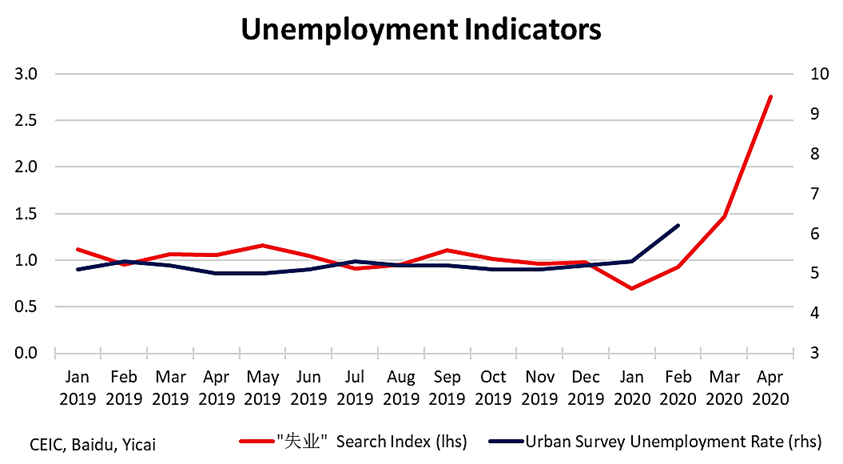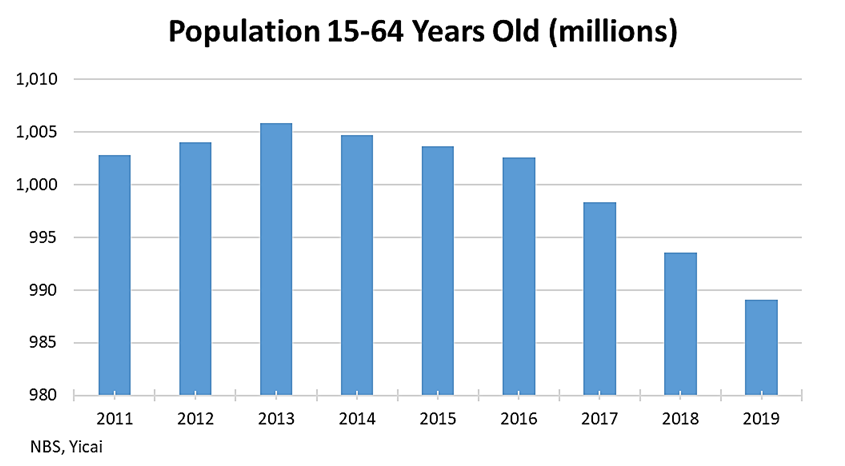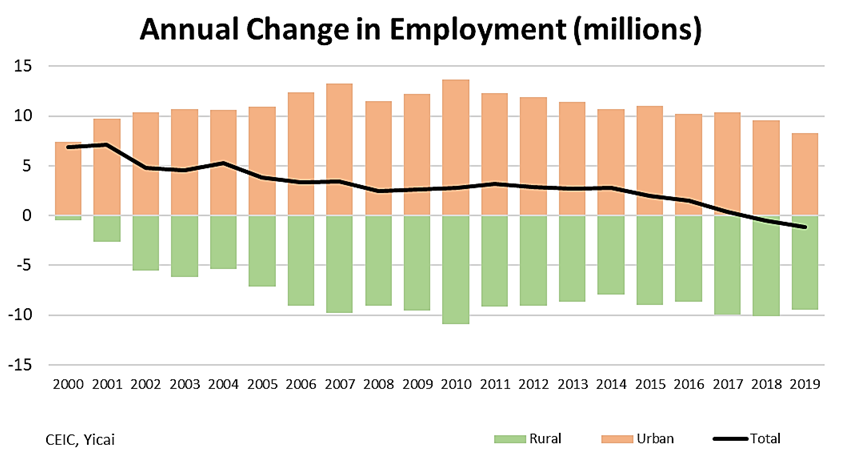 How Will China Manage Massive Layoffs?
How Will China Manage Massive Layoffs?(Yicai Global) April 16 -- Unemployment in China is rising. While the economy is slowly recovering from having been shut down by Covid-19, foreign demand has begun to evaporate, as the virus spreads among China’s trading partners. The National Bureau of Statistics’ (NBS) survey for February showed a jump in the unemployment rate to 6.2 percent from 5.2 percent in December. This implies that close to 5 million workers lost their jobs in early 2020.
As the graph below shows, the worst may not be over. Internet searches, through mid-April, for the term “失业” (unemployment) have spiked. At a minimum, this suggests widespread fear of unemployment, if not an actual sharp increase in joblessness, which has yet to be reflected in the official data.
How many workers might lose their jobs and what will become of the unemployed are questions on everyone’s mind.

There is considerable uncertainty surrounding the evolution of the virus, the response of public health authorities and the effectiveness of supportive economic policies – both in China and abroad. This makes it extremely difficult to forecast the extent to which Chinese labor markets will come under pressure and how many workers will be laid off.
One of the more careful estimates I have seen comes from Plenum China, a research firm out of Washington DC, with offices in Beijing, Hong Kong, and Shanghai (https://plenum.ai/). Their analysts did a granular, sector-by-sector, estimate of job losses based on projected revenue declines.
Plenum sees employment in services falling by 15 million this year, with layoffs in accommodation and catering accounting for just over half the sector’s total.
They expect the manufacturing sector to shed 9 million jobs, as employers continue to upgrade and use the virus as an opportunity to reduce their unskilled staff.
Construction is suffering now as a result of declining infrastructure and real estate investment. However, it should gradually pick up, as policies are eased. Plenum expects the construction sector to retain its employees.
Some industries could increase their employment this year. Plenum expects the IT sector to add 2.2 million jobs, while public health and administration could hire an additional 1.5 million.
On net, Plenum expects urban employment to fall by close to 21 million, or by about 4 percent.
Plenum’s estimate is in the same ballpark as the Asian Development Bank’s (ADB) forecast. The ADB recently projected job losses for the Chinese mainland and many other economies(https://data.adb.org/dataset/covid-19-economic-impact-assessment-template). It sees China’s employment declining by between 4.74 and 5.25 percent, depending on the length of time it takes to contain the virus. This would translate into 25-28 million urban jobs lost, given Plenum’s estimate of urban employment at 530 million.
While the loss of millions of jobs is clearly a setback for the economy and the cause of much human suffering, China has two advantages, compared to many other countries, in digesting such a large increase in unemployment.
The first of these is favorable demographics. Largely as a result of the one-child policy, China’s working age population peaked in 2013 and has been declining ever since. The graph below shows that in both 2018 and 2019, the working age population fell by close to 5 million people.
While a shrinking working age population represents a long-run challenge for producing goods and services, in the short term it creates space to absorb a portion of the laid off workers.

The second advantage that China has, is the way in which the rural labor force can buffer fluctuations in the urban economy. The graph below shows the annual change in employment in both urban and rural areas as well as in the whole economy. On average, over the last five years, the urban economy created about 10 million net new jobs. With an essentially stagnant labor force, the only way these positions could be staffed was by inducing workers from the countryside to migrate to the city. Given that urban workers are, on average, much more productive than their rural counterparts, higher wages provide the incentive to move.
When the urban economy slows, as it did in 2008-09, fewer urban workspaces are created, the demand for rural labor falls and there is less migration. This year, urban jobs will disappear. The 10 million rural workers who had been planning to move to the cities will stay at home. Perhaps the same amount again will leave the cities and return to their villages, where they will be re-absorbed by their families, which form their social safety net.
Of course, many urban workers will lose their jobs as well. They will not have the option of moving to rural areas and living off of the land. However, China’s favorable demographics and the flexibility provided by the migrants will make it somewhat easier for them to find new employment in these difficult circumstances.
